The denomination ‘Asolo Prosecco Superiore’ was created in 2009, alongside that of the neighbouring Conegliano Valdobbiadene Superiore, as part of the reforms that elevated the two hilly areas in the province of Treviso to DOCG status. This distinguished them from the Prosecco DOC zone which extends across the rest of the Veneto and Friuli Venezia Giulia regions. At that time, sparkling wine was just one of a lengthy list of red and white wines included under the umbrella of the Montello-Colli Asolani DOC, and the effect of the DOCG creation was not immediately felt in Asolo.
The seed, however, had been sown. A ground swell which has rapidly gained momentum over the past decade has seen production increase from fewer than two million bottles in 2013 to the 2022 figure announced by the Producers’ Consorzio: 24 million. Asolo has been swept along, in part, by the exponential growth of the sector as a whole, but there are many unique reasons to explain the emergence of Asolo as a ‘special Prosecco’ in the Superiore category.
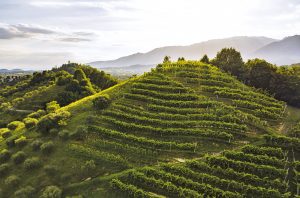
Sense of place
Not least of these is the unique sense of place. To mind might immediately come the charm of the mediaeval hill-top town of Asolo with its winding cobbled streets, or perhaps the sixteenth century villas of the Venetian nobility in the countryside below. But the sense of place is most tangible and heightened by the smallness of the scale. The total area under vine in the DOCG zone is just under 2,200 hectares, a drop in the ocean compared to the 8,700 ha of the neighbouring Conegliano Valdobbiadene. It takes no more than 30 minutes to drive between the two villages which mark the boundaries of the Asolo DOCG: Nervesa della Battaglia, overlooking the river Piave on the east; and Fonte to the west. The road skirts the growing area to the south of hills which rise up to 450 metres above sea level, nestling below Monte Grappa and the Venetian Dolomites. As you progress towards the west, the soft rounded contours of the Montello give way to the steeper gradients of the curiously-shaped conical hills around the town of Asolo. The area is densely wooded – the vineyards that stretch down, intermittently, the south- facing slopes occupy a mere 6% of the total surface area. Such context of biodiversity also sees thriving fruit orchards and olive groves (the source of Italy’s most northerly olive oil) alongside the vines.
All these factors contribute to the quality of the growing environment for white grapes, which has long been recognised. In his 1874 map of the varieties grown on the hills of Asolo, the pioneering viticulturist Antonio Carpené identified the area’s vocation for ‘Prosecco’ (the variety referred to today as Glera) amongst a host of other local white varieties, still present today in older vineyards. This quality derives in part from the climate and in part from the soils, which in combination give the wines their distinctive individuality. The warm but not excessively hot summers give richness to the fruit, while the long lead into harvest is tempered by the cool air from the mountains, guaranteeing fresh acidity. The Extra Dry styles have the classic ripe apple, pear and citrus notes of Glera, while the drier Brut and Extra Brut wines have substance without harshness. Soil variations within the DOCG add nuances. The predominant calcareous marl of the hills of Asolo add a gentle twist of aromatic herbs, while the ferrous clay soils of Montello in the east confer a savoury mineral tang to the wines.

Asolo Prosecco – A style guide
With the exception of the Sui Lieviti style below, Asolo Prosecco wines are made by the Charmat/Martinotti method of vat refermentation, with shorter or longer contact with the lees, depending on the style the producer wants to achieve. Producers generally distinguish between ‘Charmat corto’, which is generally 30-40 days for fruitier styles, and ‘Charmat lungo’, for a more leesy style, with the wines remaining for 90 days or more in the vat.
SUI LIEVITI (‘on the lees’)
Brut nature wines with lees sediment (i.e. released undisgorged) made by the traditional method, with secondary fermentation in bottle. These deliver bone dry, intense and savoury expressions of the terroir. A niche production with a faithful following among aficionados of the style.
EXTRA BRUT (<6g/l residual sugar)
Asolo was the first Prosecco Superiore denomination to introduce the ultra-dry style into its legislation. Production is limited but increasing, in response to contemporary demand for more sophisticated food wines.
BRUT (<12 g/l residual sugar)
As with Extra Brut, production is increasing. Taken together, the two drier styles now represent around a quarter of the total production. Firm and minerally, the trend is for wines in this category to have lower residual sugar. Typically made with extended contact with the lees and late-released.
EXTRA DRY (12-17 g/l residual sugar)
Still the most popular style by far, representing almost three-quarters of the annual output. Fresh and zippy, the classic apèritif wine is generally made generally with shorter refermentation and without lengthy lees ageing, to highlight the fruit and gentle floral aromatics.
DRY (17-32 g/l)
The sweeter, but not overly sweet style, is rarely exploited today which is really a pity – nicely chilled there is nothing more refreshing on a hot summer afternoon.
Modern expansion
If in the past the potential of the area was not completely exploited for the production of Prosecco, the evolution of the industry in the last decade has been a contributing factor in its modern expansion. Traditionally, like many areas in the sub-Alpine hills of the Veneto, Asolo and Montello were areas of small family grape growers rather than winemakers. The larger négociant houses and the local cooperative continue to buy in grapes from small holders, but the profile of the industry has meanwhile changed. The emergence of a new generation of wineries, technologically savvy and sensitive to sustainability issues, is helping to drive production and quality consistency.
Many factors, from the human element to the natural environment, contribute to the growth of Asolo. There is no one secret to success, but perhaps the President of the local Producers’ Consorzio, Ugo Zamperoni, puts his finger on a quality that brings it all together when he says that the success of Asolo Prosecco lies in its ability to remain true to itself, and to represent ‘accessibility and the
conviviality’. Such are the qualities that have always united people in the local osterias of the Veneto and now across the world, around a bottle of Asolo Prosecco.

Asolo Prosecco Superiore DOCG – 12 wines to try
Wines tasted and scored by the Decanter team. Ordered by score in descending order.
 Bresolin, Extra Brut Benny NV
Bresolin, Extra Brut Benny NV
96 points
Run by three young brothers with vineyards in the hills of Asolo, this boutique organic estate founded in 2012 makes limited production wines of great personality. Their Extra Brut (undeclared, but from the 2021 vintage) has the super-fine bead that comes from long, slow refermentation, intriguing aromas of Mediterranean herbs and a vibrant palate of great purity. Dry without asperity with a long and beautifully defined, tangy citrus finish. Exceptional.
 Case Paolin, Extra Brut Pietra Fine 2021
Case Paolin, Extra Brut Pietra Fine 2021
96 points
The Pozzobon family are pioneers of organic viticulture in Asolo, with a range of sparkling and still wines of impeccable quality. The Pietra Fine Extra Brut is their top Prosecco, sourced from a single plot of old vines and picked late for extra body. The pure apple, citrus and almost saline notes of samphire on the nose give way to an intense and infinitely long palate which finishes with ripe fruit, herbs and almonds. Outstanding.
 Leterre, Dry Millesimato 2021
Leterre, Dry Millesimato 2021
96 points
Based in the northeast of the DOCG, the Andrighetto family specialise in the red and white varietal wines of Montello. They only produce one Prosecco Superiore, and in the face of every current trend, they admirably make it in the Dry style, with 20 g/l of residual sugar. Fresh and delicately fruity on the nose, with hints of almonds, and aromatic herbs. Beautifully balanced on the palate. Delicious.
 Asolo Manor, Sui Lieviti Figlio della Roccia 2020
Asolo Manor, Sui Lieviti Figlio della Roccia 2020
95 points
This young organic estate produces around 7,000 bottles a year, sourced from a 2ha vineyard on stony calcareous soils at an altitude of 300 metres. The initial fermentation for this toothsome Sui Lieviti takes place with indigenous yeasts, followed by secondary fermentation in the bottle without dégorgement. On the nose, the delicate lees character harmonises with citrus and wet stone notes. It also gives breadth to the palate, for a wine of great energy and spontaneity.
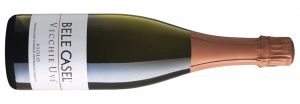 Bele Casel, Extra Brut Vecchie Uve 2019
Bele Casel, Extra Brut Vecchie Uve 2019
95 points
Made with a percentage of rare local varieties grown alongside Glera in a vineyard planted in the 1970s, Vecchie Uve encapsulates Luca Ferraro’s terroir philosophy. Grapes picked at full phenolic ripeness, minimal intervention in the cellar, lengthy refermentation and ageing on the lees, (a full 18 months in the case of the 2019 vintage), result in an earthy, uncompromising wine of depth and savoury intensity, but also remarkable freshness.
 Martignago, Extra Brut NV
Martignago, Extra Brut NV
95 points
Martignago’s Extra Brut comes from their property on the steep slopes above the Palladian Villa Barbaro at Maser, UNESCO World Heritage site and a must-visit during a stay in Asolo. The combination of stony calcareous soils, full-on southern exposure and late picking, give this Extra Brut the richness of fruit and extract to support its zero sugar content. On the nose, hints of dried roses, on the palate citrus and a hint of apricot in the finish.
 Amadio, Extra Brut Era Grande NV
Amadio, Extra Brut Era Grande NV
94 points
Planted from scratch on calcareous marl slopes at Monfumo, just over ten years ago, this 25ha estate is one of the leaders of the new generation at Asolo. The extensive range of precisely crafted wines are classic representatives of the denomination and the Extra Brut, with its flinty, wet stone character on the nose and crisp citrus fruit palate, is a perfect example of the fresh and lively house style.
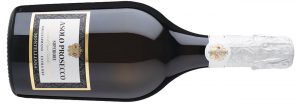 Montelliana, Millesimato Extra Dry 2022
Montelliana, Millesimato Extra Dry 2022
Dry 2022
94 points
The excellent Montelliana cooperative brings together 400 growers from the hills of Asolo and Montello to produce the full range of Prosecco Superiore. This benchmark example of the Extra Dry style has ripe yellow and citrus fruit, a hint of aromatic herbs and a juicy finish with perfect balance between sugar and acid. The ideal apèritif wine.
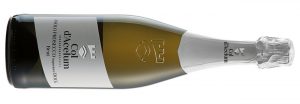 Tenuta d’Asolo Progress Country and Wine House, Brut Col d’Acelum 2022
Tenuta d’Asolo Progress Country and Wine House, Brut Col d’Acelum 2022
94 points
This country house hotel and winery has 9ha of organically grown vineyards and state of the art cellars at Asolo, where they produce refined Proseccos in a drier style with a distinctive terroir character. The estate’s Brut from the new 2022 vintage opens with subtle, herbal aromas on the nose and follows through on the palate with a creamy mousse and a return of the intriguing aromatic herbs in the finish.
 Rive della Chiesa, Extra Dry NV
Rive della Chiesa, Extra Dry NV
93 points
In the local dialect ‘Rive’ are the steep slopes where the best vineyards are located. The Rive in this case are on the wooded hills of Montello, where the Gasparetto family source this Extra Dry with 12 g/l of residual sugar (the minimum for the category). It has Glera’s lightly perfumed floral aromas, and an appealing ripe apple and pears palate with finely judged sugar-acid balance.
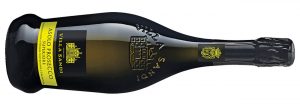 Villa Sandi, Brut Biodiversity Friend NV
Villa Sandi, Brut Biodiversity Friend NV
93 points
Villa Sandi are one of the acknowledged leaders in Prosecco Superiore, with a production of impeccable quality and consistency which encompasses both Asolo and Valdobbiadene. The Asolo Biodiversity Friend range comes from a single dedicated plot in a protected natural area at Nervesa della Battaglia. Freshness and accessibility are the hallmarks of the Villa Sandi house style and they are exemplified to perfection in this lively Brut with its varietal aromas and ripe, juicy fruit.
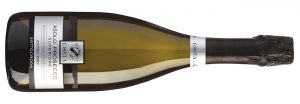 Vini Costa, Extra Dry Sottocroda NV
Vini Costa, Extra Dry Sottocroda NV
92 points
The Costa family are third generation growers with vines and olives on the high slopes of Montello. They make a range of the area’s traditional red and white varieties, as well as a limited production of benchmark Prosecco Superiore. The Extra Dry has a floral nose with touches of marzipan and ripe yellow fruit and a softness on the palate which is balanced by the minerally finish typical of wines from the red clay soils of Montello.
Discover more about Asolo Prosecco
Connect on
Facebook | Instagram








